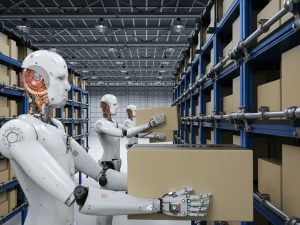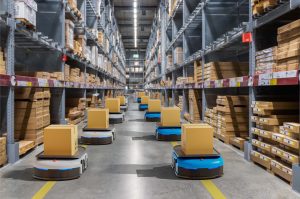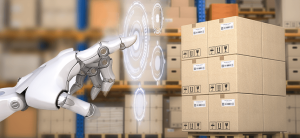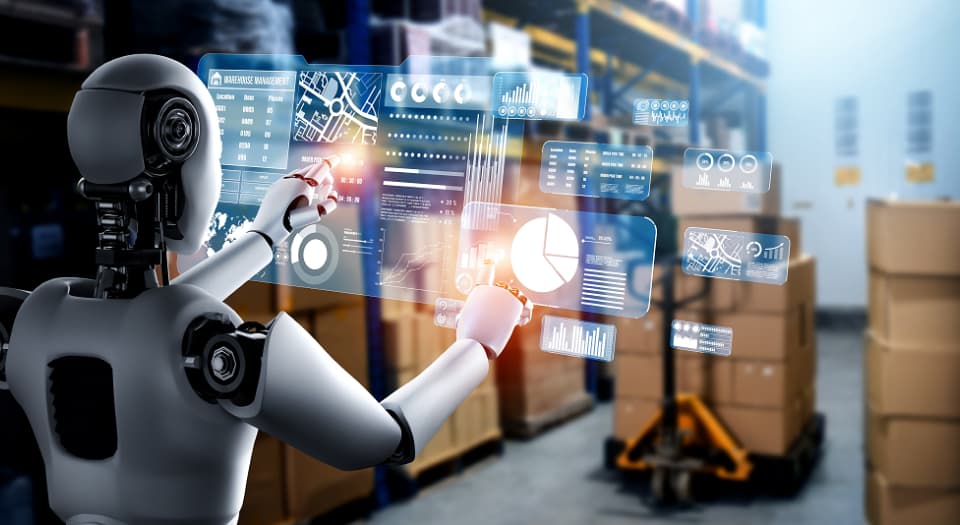HOW DOES AI CHANGE THE WAY LOGISTICS OPERATES?
HOW DOES AI CHANGE THE WAY LOGISTICS OPERATES?
In recent years, artificial intelligence (AI) has completely changed the logistics and supply chain industry.
Businesses are enhancing their logistics services through five manifestations of AI in technology.

Robots
Many companies are applying Robotics in the supply chain management process, including activities such as delivery, picking, packaging, storage, and transportation. According to Statista research, revenue from logistics robots will reach more than 6 billion USD in 2021.
The fundamental difference with conventional robots is that AI-powered robots can perform more complex tasks without human intervention. Therefore, robots in the logistics field can boost production, while helping humans manage delivery stages more easily.
If businesses apply robots, self-driving cars, big data, predictive analysis, and computer vision, they will bring high efficiency during operations.
Self-propelled vehicle
Autonomous vehicles have the potential to significantly improve delivery efficiency. This technology improves reliability, cost efficiency and predictability. Although fully automated delivery vehicles are not yet available, it is only a matter of time.
As technology develops, in the not too distant future, consumers will receive shipments without the need for human intervention.
According to Mckinsey’s research, autonomous vehicles, especially drones, will deliver more than 80% of all packages.
By overcoming transportation obstacles and inconveniences, this technology will improve the efficiency of the distribution process.

Computer vision
Every vision system is made up of two main components: The camera and the computer “brain.” Based on a complex algorithm, computer vision can detect objects, goods, specific activities, colors and perform actions.
This technology is used to identify damage and increase productivity during the manufacturing process. Furthermore, computer vision-enabled systems can automatically detect damage, determine the cause of the damage, its severity, and take steps to prevent future cargo mishaps.
Product handling is another application of computer vision. This technology not only identifies and locates items in the store but also operates independently. Widespread use of intelligent computer vision systems will reduce customer disruption, improve supply chain quality and the security of delivery processes.
Predictive analytics
Any logistics company must be able to operate efficiently, deliver on time and save on transportation costs. To do this, an in-depth study based on historical data is required to detect risk trends, correct them and make forecasts.
According to MHI’s 2020 logistics industry survey, the percentage of logistics companies using predictive analytics increased from 17% in 2017 to 30% in 2019. This capability not only improves supply chain visibility response, optimize routes and manage transport more easily, but also identify unexpected situations and risks.
Big data
Logistics, like any other business, generates a significant amount of data. Without a good data management system, it will be more difficult for businesses to process all the documents. Companies can save costs and avoid late deliveries by collecting data from multiple sources.
According to the results of a study, more than 91% of Fortune 1000 companies are investing in big data. Furthermore, AI-based data analytics allows businesses to calculate variables such as fleet maintenance schedules, vehicle sensors, weather, and fuel costs.


